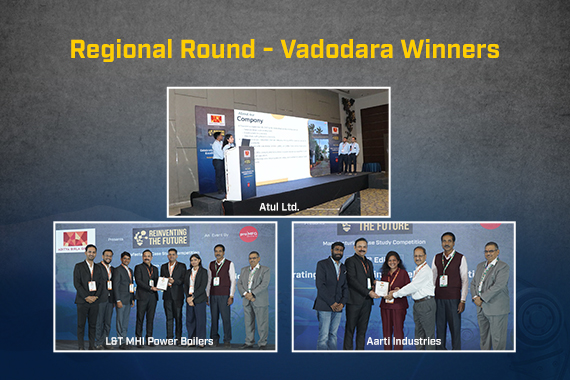India’s Aerospace & Defense Manufacturing – Vision ‘Atmanirbhar’ – Part 3
#Leadership #Aerospace #AtmanirbharWing Commander Arun Kumar is an IAF Veteran with more than 28 years Program, Procurement, People & Operations Management experience in the domains of Aerospace, Defense & Technology (Command & Control IT Frameworks for Disaster Management & Smart Cities, IoT Frameworks for Power Management). Besides having done his MBA- B.Tech from IIFT & NIT Bhopal resp., he is a certified PMP-Six Sigma professional from PMI, US and Indian Statistical Institute, resp.

In continuation with Part 1 & 2 of India’s Aerospace & Defense Manufacturing – Vision ‘Atmanirbhar’, Part – 3 of the article focuses on the improvisation of logistics, challenges of for the Indian A&D Industry, and how ‘Atmanirbhar India’ can be a roadmap for the industry to succeed on the global platform.
Key A&D Players in India
National Private Players
- ➢ Tata Power Static Engineering Division
- ➢ Mahindra Aerospace
- ➢ Kalyani Strategic Systems Ltd
- ➢ Bharat Forge
- ➢ Tata Advanced Systems Ltd
- ➢ Reliance Naval and Engineering Limited
- ➢ L&T Heavy Engineering
- ➢ Ashok Leyland Defense
- ➢ Adani Aero Defense Systems & Technologies Ltd
- ➢ Taneja Aerospace
- ➢ TAAL
- ➢ Altran
- ➢ Apollo Microsystrems
- ➢ Drone Aerospace Systems
- ➢ Ramco / Quest Global / Cyient / Wipro / TCS
- ➢ Astra Microwave Products Ltd
- ➢ Brahmos Aerospace Pvt Ltd
- ➢ Hindalco-Almex Aerospace Ltd (HAAL)
International Players
- ➢ Airbus
- ➢ Pilatus
- ➢ Boeing
- ➢ IAI
- ➢ Thales
- ➢ Honeywell Intl
- ➢ Northrop Grumman Corp
- ➢ Lockheed Martin Corp
- ➢ BAE Systems
- ➢ Rafael
- ➢ Dassault Aviation
- ➢ Raytheon
Enhanced India-Based Manufacturing Through Offsets
Export driven contracts with OEMs like Boeing and Airbus, and demanding offset contracts to 40% - 60% of the total purchase cost when purchasing fighter jets or civil aircraft from these two carriers, is one way to shore up manufacturing locally in India and grow and develop small and medium-sized private enterprises. Defense offsets, managed through Govt’s Defense Offset Management Wing (DMOW), must insist on India-based manufacturing offsets when making commercial airline purchases and which will signal its support for this industry.
Foreign OEMs have freedom to choose offset partners over course of contract along with ease of replacement of existing partners, bringing in more competition and efficiency. For contracts with foreign OEMs under Buy (Global) category, offsets are applicable for contracts above US$ 300 Mn (INR 2000 Cr). Existing Offset obligations of foreign OEMs are approximately USD 5 Bn. Offsets for another 10 to 12 Billion USD are in the pipeline, which will be required to be discharged over the next 8 to 10 years.
India’s growth in low-cost carriers and rising passenger traffic is expected to result in a demand for about 2,300 aircraft (Boeing study) over the next two decades, valued at the US $320 billion in India. If 40-60% offset is applied to civil aircraft deliveries, this would result in additional $8 billion PA contribution from the aerospace private sector, not including the potential aerospace defense sector offsets. Add another $1-2 billion offset per year from fighter aircraft will result in a $10 billion aircraft component and aerostructures manufacturing private sector. This excludes existing and potential contractual component business that the private sector is already engaged in and could muster with OEM’s. MRO related business would be incremental.
Improving Logistic Infrastructure
Logistics infrastructure must improve in India if parts are to be delivered efficiently. Hastening ‘time-to-market’ is critical in the success of aerospace parts export. Infrastructure plays a critical role in building an A&D manufacturing base. Govt must support and encourage the creation of local aerospace hubs. Creating clusters helps micro, small, and medium enterprises (MSMEs) that supply components and subassemblies to large manufacturers. Vibrant clusters would make it easy for companies to have access to talent and create synergies on logistics. We have done this before while building software parks, smartphones, and auto parts. We can do it again for the aerospace industry too. Land availability with subsidized utility services for a defined number of years depending upon the industry is the critical need of India. Capital investment tax breaks must be given. The development of aerospace raw material industry will also be a positive result of growth alongside domestic and export-oriented manufacturing.
Israel Defense Sector – A Role Model
Israel, the foremost military and technology power of West Asia, is just one year younger to the Republic of India, Israel created in 1948. Historically, the two friendly nations share very similar hostile neighbourhood and security challenges. Unlike India, Israel realized the need for self-reliance in Defense production for its survival and thanks to its sustained national efforts, today, it is one of the largest exporters of defense equipment and services has created a mega defense industry.
Since formation, Israel has established an industry, which has not only aimed to strengthen its Defense due to its geography and mostly surrounded by enemies but also to create employment avenues.
‘Procurement Era’ - Under this, military industries were consolidated into a new entry, the Israel military industry that was seen as more of a job creating enterprise rather than a Defense necessity. In early 1950s-60s, the nascent Israeli state fulfilled its requirements through foreign procurement referred to as ‘Procurement Era’. Countries like the U.S, France, and Germany agreed to export their Defense products and services to Israel. Israeli Defense Forces (IDF) continued purchasing weapons heavily from abroad up until 1967. This procurement process rendered huge dependence on the foreign suppliers leading to the sudden distress that occurred during the Six-Day war (1967) after the imposition of French Arms Embargo.
‘Indigenization era’ - The leadership launched a massive campaign in the quest of self-reliance in Defense through closely related aspects of comprehensive national security apparatus such as state policies, private sector, diplomacy, academia and particularly the industries etc. Israel, thereafter invested heavily, both in finance and in human resource, with the aim to achieve total self-reliance in building up military capability and attaining technical competence to shield itself against internal and external security threats. This further led the Govt to direct national resources towards production of Israeli indigenous arms, ammunitions, heavy and lightweight weapons, short-range missile systems, tanks, drones, electronics and radar systems, advanced technologies - AI (Artificial Intelligence) and cyber space etc. to achieve a holistic security for the country. This period after the war can be attributed to as ‘Indigenization era’, which witnessed a drive towards self-reliance, and subsequently the dependency on the foreign weapons subsided, however, it did not terminated completely.
‘Commercialization era’ - The decades that followed the Six-Day war observed a sea change attitude in Israel’s approach towards the defense manufacturing and procurement of defense equipment. This new ‘commercialization era’ was fueled by a host of industries working in the Defense and allied sectors particularly Bedek Aviation (later Israeli Aerospace Industry (IAI)), IMI (Israel Military Industries) and Rafael Advanced Defense Systems. These three major enterprises accounted for 70% of Israel’s Defense base with several medium and small private companies providing niche capabilities to major contractors.
- ➢ Israeli Aerospace Industry – 1953 (Earlier Bedek Aviation, its an Aircraft MRO facility designed to serve the Israeli Air Force as well as commercial air carriers, Arava – a light transport aircraft was its first indigenous aircraft).
- ➢ Elta Systems – 1967 (Formed from Bedek Aviation assimilated electronic and radar-affiliated companies named as ELTA Systems that got highly successful in employing in local areas and today ELTA is the leader in avionics warfare systems and radar of all kinds).
- ➢ Rafael Advanced Defense Systems (Focused on design / production of ground-to-ground, ground-to-air missile system, PGMs)
- ➢ Israel Military Industries Ltd (IMI) (Specializing in the development and manufacture of offensive and defensive weapon solutions).
NEWSLETTER
TRENDING ON PRO MFG
MORE FROM THE SECTION









